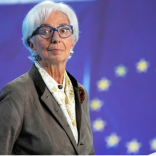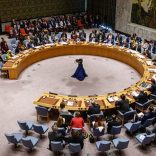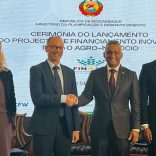Trump administration rewrites and scales back annual human rights report
IMF meetings to highlight policy puzzle for economists

FILE - In this file photo taken on September 4, 2018, the logo of the International Monetary Fund is seen at the IMF headquarters in Washington, DC. [File photo:Jim Watson/AFP]
The bombardment of commentaries about the economic outlook and policy implications from this week’s annual meetings of the International Monetary Fund and World Bank will most likely coalesce around three big themes. Although none of them are likely to move the needle for markets, they will highlight critical longer-term challenges that, as yet, lack good theoretical or practical solutions.
The first is the uncertain and unstable outlook for the global economy, which will be underscored by the new IMF projections. On paper, the forecasts are most likely to be marginally better than the last set. But the commentary that accompanies them will emphasise the risks involved, not only those related to further Covid-19 restrictions on economic activity, particularly in some parts of Europe, but also the cautious behaviour of households linked to “human counterparty risk” — that is, the inability of many people to ascertain with a sufficient degree of confidence the risk they take in the face-to-face interactions that are critical for economic activity, particularly in the service sector. Indeed, I would go one step further and suggest that were the IMF projections reworked again today, they would end up with fewer upward revisions.
The second theme is that of broad-based agreement on the need for an overdue transition from excessive reliance on unconventional monetary policy to a more balanced mix anchored by responsive fiscal policy and pro-growth structural reforms. Yet implementing it is far from certain. In some countries, such as the United States, there is insufficient political cohesion. In many emerging economies, it can be attributed to limited policy space and a lack of financial resilience.
The third theme is the urgency to support the most vulnerable countries, which need to spend more on health and other social sectors. It will stress both the importance of expanding and extending the debt-payment holidays provided by many G-20 governments to the poorest developing countries and the need for the private sector to participate. Yet there are few, if any, agile top-down tools for enticing burden sharing on the parts of banks, bondholders and other private creditors.
The combined result will emphasise four longer-term challenges that theoretical and practical economists, in both public and private sectors, need to address urgently:
- How to revamp global growth dynamics that, in many cases, may well require a fundamental recasting of models that relied on globalisation to supplement internal drivers and to facilitate productivity reforms.
- How to deal with national and international inequalities that, because of Covid-19, have jumped in a worrisome way from income and wealth to also include an increasing and potentially devastating dispersion in opportunities.
- How to assess the longer-term risks posed to effective monetary policy and financial stability arising from over-reliance on central banks and the lack of policy handoffs.
- How to make the international debt architecture more agile in a global system that, at least in the short term, is more likely to face further fragmentation pressures rather than renewed cooperation and coordination.
Some economists have already demonstrated innovation amid multifaceted Covid-19 adversity, such as the use of more micro, high-frequency “big data,” like mobility statistics and credit card payments, to provide more timely indicators of economic activity. The hope is that this week’s annual meetings will act as an additional catalyst for avoiding a repeat of the big policy shortfall of the global financial crisis: that of winning the war against a global depression but failing to secure a peace of durable, inclusive and sustainable growth.
Through more timely theoretical and practical responses to the underlying challenges that will be highlighted by this week’s feast of projections and policy commentary, economists can do much more to both limit the immediate and longer-term damage to well-being and help put in place stronger national and global foundations for longer-term prosperity and genuine financial stability that have eluded too many for too long.













Leave a Reply
Be the First to Comment!
You must be logged in to post a comment.
You must be logged in to post a comment.